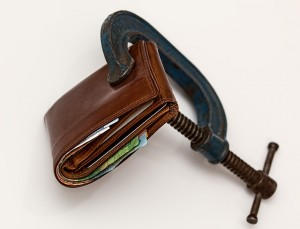 What gets in your way with planning for money? If you are like most people, there are two hurdles that make it hard to plan….emergencies and occasional expenses. We’ve all heard that we should set up a separate account with money for those emergencies in life that come as chance cards, but it is the second category, occasional expenses, that is continual and disrupts any planning or budgeting that might help your family.
What gets in your way with planning for money? If you are like most people, there are two hurdles that make it hard to plan….emergencies and occasional expenses. We’ve all heard that we should set up a separate account with money for those emergencies in life that come as chance cards, but it is the second category, occasional expenses, that is continual and disrupts any planning or budgeting that might help your family.
So what is an occasional expense? They are the expenses that happen sometimes yearly like birthdays, holidays, vacations, car registrations and licenses and if you have children, the expense of getting them ‘back to school’ in the fall.
Occasional expenses are the trickiest for people to plan for. And, if you haven’t set up a plan for occasional expenses, it can wreck all your interest in planned spending because these expenses can get in your way of planning.
Consider a revolving savings account to manage those expenses. It is a simple way to manage a group of expenses that you know will need to be paid. Start by taking a few minutes and look over your debit card or check register for the entire past year and make a list of these occasional expenses with their headings. This may seem difficult, but you’ll get better at the estimation after you recognize these expenses coming and going across the upcoming year.
Now, make a list of these expenses, by the month and write down all of your known, but irregular expenses. The first time I did this activity, I surprised myself at the total of expenses in December for holiday spending. But when I saw the number, I realized how much more important it was to set this revolving spending account up, to manage this season.
You might also begin to recognize some flow that has disrupted your spending plan in the past. The occasional expense of sending the children back to school in September might have created havoc in your spending plan through the holidays. That is the point at which many people just throw up their hands and give up on creating a spending plan. This is just one more reason for a revolving savings account just for occasional expenses.
Now, add up the total for this occasional spending across all months. Divide by 12 for months of the year and every month, put that much money in a separate savings account. If you think this is more money than you have, you’ll be better off making some decisions now, in the planning phase. Do you want to reduce the amount you are spending on these occasional expenses or look for a different way to fund them?
Remember you are taking those numbers from your actual spending so that money did come from somewhere. You can set up your banking for this automatic movement to go right into this account, and, when you are ready to make the payment, pull just that amount of money back out.
Now, it might take a little seed money to get this type of account set up and you might wiggle through the first year feeling this change is a little uncomfortable. But as you get accustomed to moving money solely for the occasional expenses that you planned for, you will see the beauty of this account.
One of the surprises of this method is that you have already preplanned what you will be spending for these expenses, so you might find it even easier to manage!

